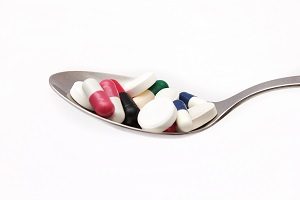Keratoderma Blennorrhagicum is a skin condition associated with reactive arthritis (formerly known as Reiter Syndrome, according to MDDK).(1)
This health issue is characterized by the presentation of a rash that begins at the extremities and spreads inward slowly and steadily.
Because the rash associated with this problem can look so similar to other skin rashes such as psoriasis, it is important to obtain an accurate diagnosis by a medical professional.
A definitive diagnosis is especially important because this condition is associated with reactive arthritis, which itself may be genetically inherited or triggered by bacteria.
In this post, learn all about Keratoderma Blennorrhagicum, including what it is, what causes it, the warning signs and symptoms to look for, how it is diagnosed and treated and what steps to take…
What Is Keratoderma Blennorrhagicum?
Keratoderma Blennorrhagicum, according to the University of Maryland Medical Center (UMMC), is a specific type of reactive arthritis that is related to the presence of certain bacteria in the body.(2)
As the American College of Rheumatology reports, reactive arthritis is a specific form of arthritis caused by inflammation.(3) This type of joint disease may arise due to a number of different bacteria, but is most commonly associated with genitoury or bowel bacteria (i.e. Chlamydia, Salmonella, Shigella, et al).
Keratoderma Blennorrhagicum is the rash that often occurs with reactive arthritis. It most typically presents first on the palms of the hands and on the soles of the feet.
Causes
The most common cause of this condition is contact with the bacteria that cause reactive arthritis.
This bacteria most often enters the body through the genitals or the rectum, where it begins to spread and cause symptoms. Sometimes the bacteria can also be present first in the intestinal tract.
According to the Mayo Clinic, reactive arthritis is not considered a common disease.(4)
The Journal of the American Medical Association (JAMA) reports that on its own, Keratoderma Blennorrhagicum is considered extremely rare, with only 70 cases reported worldwide, of which 11 occurred stateside.(5)
The three most common causes, according to DermNet New Zealand, are as follows:(6)
» Eating food contaminated with certain bacteria that results in diarrhea.
» Sexual intercourse that transmits STD-implicated (sexually transmitted disease) bacteria.
» Presence of the HLA-B27 genetically.
Symptoms
Keratoderma Blennorrhagicum itself is considered a symptom of one or more underlying medical conditions, including some sexually transmitted diseases, intestinal bacterial infection and reactive arthritis (Reiter Syndrome).
As such, it is important to look at the full range of symptoms you may be experiencing and not assume that other symptoms are unrelated to the skin rash you are seeing.
The specific symptoms include these:
» Rash that first presents on the palms of the hands and/or the soles of the feet.
» The rash slowly begins to spread and may also show up in the genital areas, up the sides of the legs and in the eyes.
» The rash is characterized by scaliness, hard patches, pustules, tender lumps that are hard to the touch and blisters along with a very red appearance.
Additional symptoms that are associated with Keratoderma Blennorrhagicum and reactive arthritis include these:
» Joint inflammation and pain beginning in the extremities.
» Chronic mouth ulcers both inside and outside the mouth.
» Conjunctivitis (pink eye).
» Eye inflammation and irritation that causes vision distortion.
» Low back aches and pains.
There are two main types of reactive arthritis: genitoury-based and intestinal-based. Either can prompt a case of Keratoderma Blennorrhagicum, but they often have different underlying symptoms.
For example, genitoury-based reactive arthritis may also include these symptoms:
» Discharge from the genitals.
» Symptoms of a UTI (urinary tract infection).
» Rash on the genitals.
» The sensation of burning while urinating.
» Prostate gland or cervix inflammation.
» Fever and chills.
» Occasionally, genitoury patients are asymptomatic.
Intestinal-based reactive arthritis may also include these symptoms:
» Heavy diarrhea.
» Fever and chills.
» Heart problems.
Because symptoms can vary so much from case to case, writing down each symptom even if you don’t think it is related to the others can help your doctor achieve a faster and more accurate diagnosis.
How Is Diagnosed
 Obtaining an accurate diagnosis may involve several medical professionals, including a dermatologist (skin diseases) and a rheumatologist (joint diseases).
Obtaining an accurate diagnosis may involve several medical professionals, including a dermatologist (skin diseases) and a rheumatologist (joint diseases).
Often initially the patient will make an appointment with their family physician, who will then make a referral to the appropriate specialist.
As reported by the Journal of International Medical Association Bulgaria (IMAB), it is not uncommon for signs of Keratoderma Blennorrhagicum to appear first or quite quickly after the infection begins.(7)
When it is present along with arthritis, urethritis (inflammation of the urethra), and conjunctivitis (pink eye), it may be indicative of reactive arthritis.
Because of the diversity of potential symptoms that may present alongside this problem, several types of tests may be needed to confirm the full diagnosis. Obtaining a full and complete diagnosis is important, since a successful treatment typically depends on successful resolution of the underlying condition causing the skin lesions.
It is important here to note that only an estimated 10 percent of reactive arthritis patients also present with Keratoderma Blennorrhagicum. Sometimes the skin lesions appear first, but more frequently they follow the initial period of joint stiffness and inflammation by one to two months.
Tests that are commonly ordered to diagnose Keratoderma Blennorrhagicum and its underlying conditions can include these:
Urine culture. This test looks for the presence of a UTI (urinary tract infection) and/or the presence of bacteria indicative of a sexually transmitted disease such as Chlamydia, gonorrhea or syphilis.
CBC (complete blood count and blood chemistry). This test looks for markers for infection and inflammation as well as genetic markers that may indicate a hereditary susceptibility to reactive arthritis.
Joint fluid. Your doctor may take a biopsy of the fluid in your joints to look for a number of things: crystals that indicate urea buildup and gout, bacteria that may indicate a more severe form of sepsis arthritis and an increased white blood cell count that can point to an infection.
Imaging tests. Ultrasound, MRI and CT scans can each be used to take a look at other areas such as the low back or major joint systems to check for arthritis markers.
X-rays. X-rays are typically used to rule out reactive or other types of arthritis as a trigger for this condition.
If the diagnostic stage is delayed, there have been cases where this disorder has evolved into a more serious skin condition called generalized exfoliative dermatitis, or erythroderma.
This condition has more widespread lesions that can extend as far as the scalp and changes to the nail bed such as thickening and discoloration.
Treatment
 Treating Keratoderma Blennorrhagicum can take on a variety of forms. As the National Institutes of Health (NIH) states, use of a topical cream called tazarotene gel 0.1% can sometimes be effective to resolve the skin lesions.(8)
Treating Keratoderma Blennorrhagicum can take on a variety of forms. As the National Institutes of Health (NIH) states, use of a topical cream called tazarotene gel 0.1% can sometimes be effective to resolve the skin lesions.(8)
Topical steroids may also be used to resolve this problem. Along with the use of corticosteroids and NSAIDs (non-steroidal anti-inflammatory drugs) helps to reduce the discomfort and inflammation.
Antibiotics are often prescribed to eradicate the underlying bacteria thought to be causing Keratoderma Blennorrhagicum.
eMedicine Medscape states that up to two-thirds of all cases may be self-resolving, while 30 percent will require medical intervention to avoid developing chronic issues.(9)
If there are joint issues present, and NSAIDs are not able to be used, doctors sometimes prescribe antirheumatic drugs (DMARDs) instead.
Because this problem is so often present as a result of an underlying STD or case of reactive arthritis, treatment results can vary. In some cases, the patient will fully self-resolve within 12 months (many within 4 months).
In an estimated one-half of all cases, however, Encyclopedia reports that the condition continues to manifest and re-manifest for years.(10)
The earlier the infection is detected, diagnosed and treated, the more positive the prognosis becomes.
For patients who develop this health issue as a result of a sexually transmitted disease, after achieving successful resolution of symptoms, physicians generally advise abstinence or condom use to prevent future cases.
This is especially true for males.
Conclusion
If you are someone you care about has symptoms that may indicate the presence of Keratoderma Blennorrhagicum, it is important to seek medical guidance without delay.
This is important both to, resolve the skin lesions and to treat any underlying conditions that may be causing it…
These are the steps to take:
» Keep a symptoms log of all symptoms, even those that seem unrelated.
» Make an appointment with your family doctor.
» Make an appointment with any recommended specialist.
» Have the tests and receive the results.
» Receive an accurate diagnosis and begin treatment.
References
(1)”mddk.com/keratoderma-blennorrhagicum.html
(2)”umm.edu/health/medical/altmed/condition/reiter-syndrome
(3)”rheumatology.org/I-Am-A/Patient-Caregiver/Diseases-Conditions/Reactive-Arthritis
(4)”mayoclinic.org/diseases-conditions/reactive-arthritis/home/ovc-20269675
(5)”jamanetwork.com/journals/jamadermatology/article-abstract/501271
(6)”dermnetnz.org/topics/reiter-syndrome/
(7)”journal-imab-bg.org/statii-08/vol08_1_68-71str.pdf
(8)”ncbi.nlm.nih.gov/pubmed/10901734
(9)”emedicine.medscape.com/article/331347-overview
(10)”encyclopedia.com/medicine/diseases-and-conditions/pathology/reiters-syndrome
Leave Feedback: Was this article helpful?


 Keratoderma Blennorrhagicum itself is considered a symptom of one or more underlying medical conditions, including some sexually transmitted diseases, intestinal bacterial infection and reactive arthritis (Reiter Syndrome).
Keratoderma Blennorrhagicum itself is considered a symptom of one or more underlying medical conditions, including some sexually transmitted diseases, intestinal bacterial infection and reactive arthritis (Reiter Syndrome).